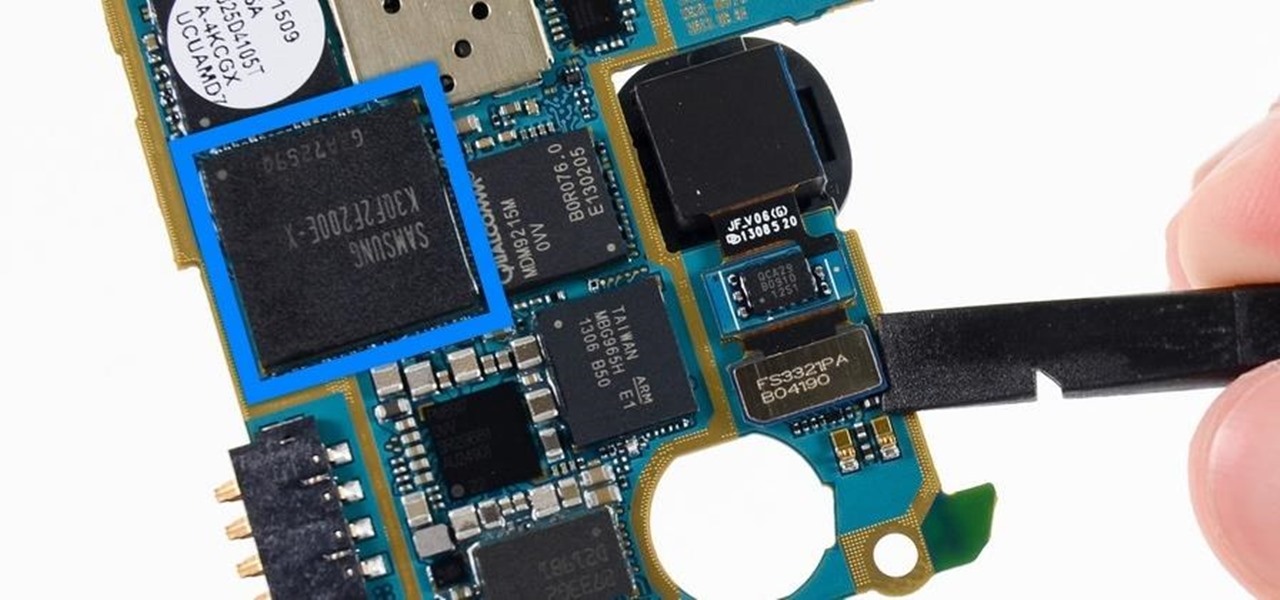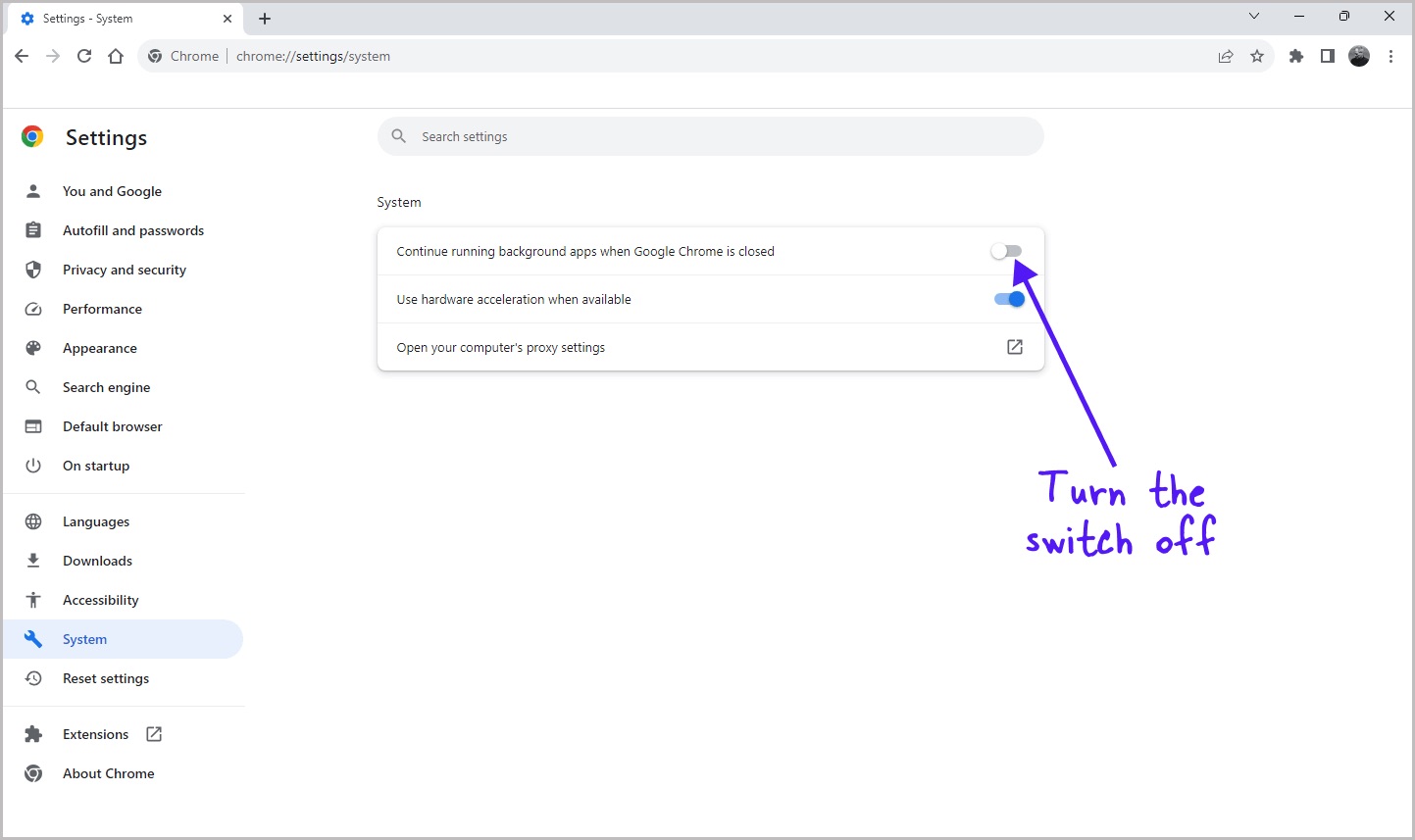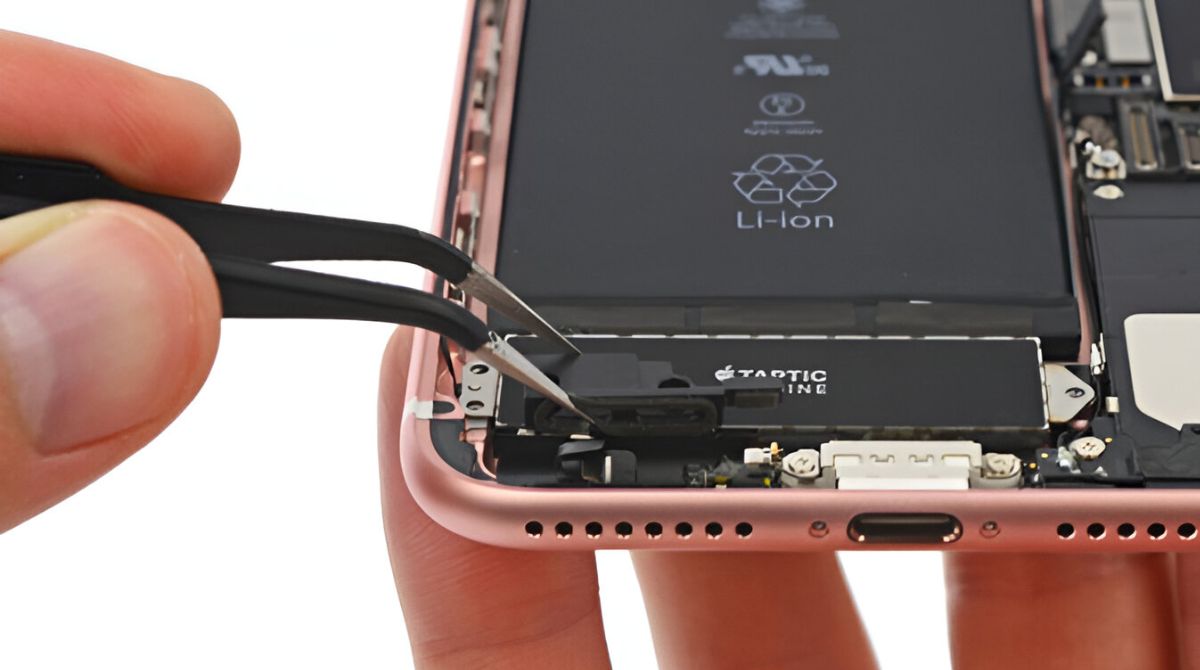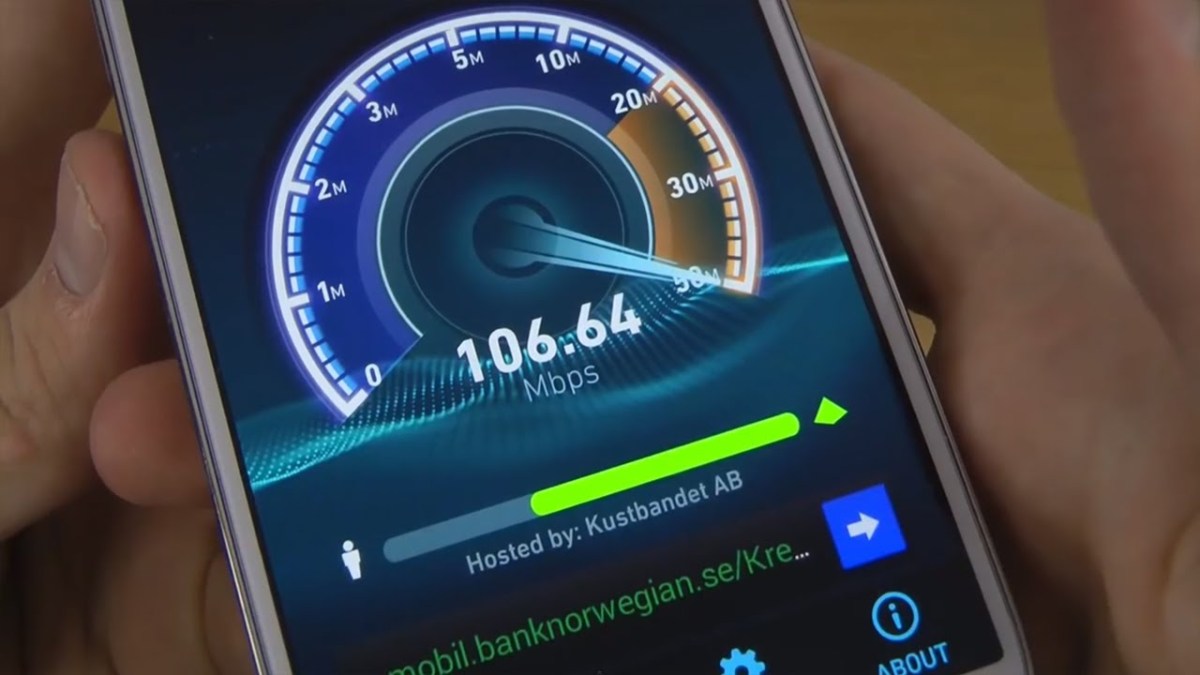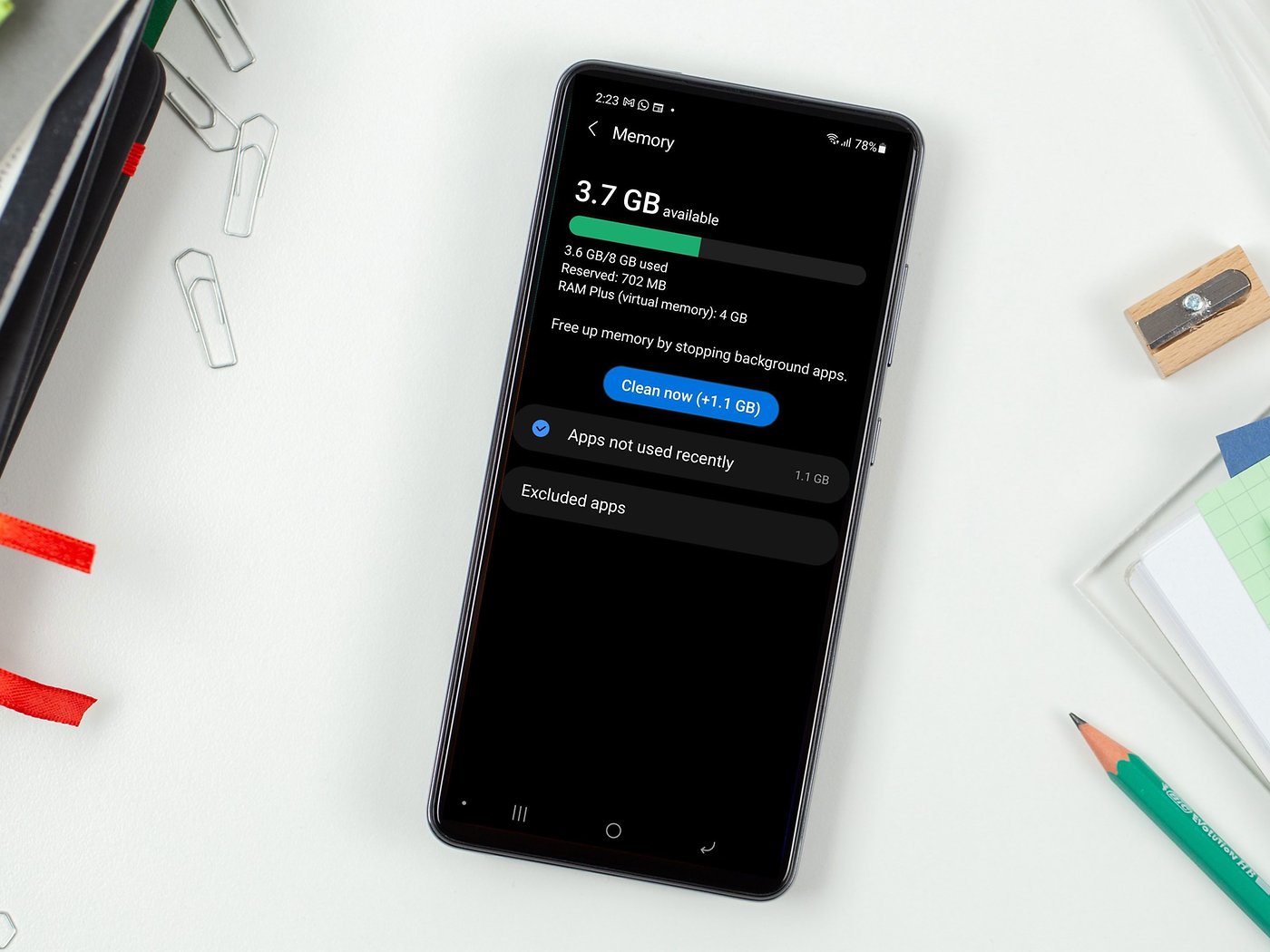Introduction
When using a computer, we often have multiple applications running at the same time. However, not all applications require the same level of resources from the CPU (Central Processing Unit). Some applications, such as video editing software or gaming programs, demand more processing power to ensure smooth performance. On the other hand, background applications, like file syncing or system updates, can run without impacting user experience.
This is where CPU prioritization comes into play. CPU prioritization allows you to allocate more processing power to foreground applications, which are the active applications that you are currently using. By doing so, you can ensure that these foreground apps run smoothly and respond quickly to user input, even under heavy load. In contrast, background applications will have lower priority and utilize fewer system resources, minimizing their impact on the performance of your foreground tasks.
Prioritizing foreground apps is especially important for users who frequently work with resource-intensive applications or engage in tasks that require real-time responsiveness. Whether you are a content creator, a gamer, or simply someone who values a seamless user experience, knowing how to set your CPU to prioritize foreground applications can significantly enhance your productivity and enjoyment while using your computer.
This guide will walk you through the steps of setting CPU prioritization for foreground applications on various operating systems, including Windows, MacOS, and Linux. By following these instructions, you’ll be able to optimize your computer’s performance and ensure that the applications you’re actively using receive the necessary resources they need to run efficiently. So, let’s get started and learn how to make the most out of your CPU by prioritizing foreground apps.
What is CPU prioritization?
CPU prioritization refers to the process of allocating processing resources within a computer’s CPU to different applications or tasks. The CPU is responsible for executing instructions and performing calculations for all running programs on a computer. However, not all applications require the same level of processing power. Some applications may be more demanding, while others may run efficiently even with limited resources.
With CPU prioritization, you can assign a specific level of importance to different applications or tasks running on your computer. By doing so, you can ensure that critical or foreground applications receive a higher portion of CPU resources, allowing them to perform tasks swiftly and respond to user input in real-time. On the other hand, less important or background applications will receive fewer resources, minimizing their impact on system performance.
The concept of CPU prioritization is particularly relevant in multitasking scenarios where you have multiple applications running concurrently. For example, let’s say you’re editing a high-resolution video using professional software, while also running a web browser with multiple tabs open in the background. Without CPU prioritization, the background processes of the web browser could consume significant CPU resources, resulting in a slower video rendering process and potential lag when interacting with the video editing software.
By setting CPU prioritization to give higher importance to the video editing software, you can ensure that it receives the necessary processing power to carry out its tasks efficiently, even when other applications are running simultaneously. This means that your foreground application will have quick response times, smoother performance, and overall improved usability.
CPU prioritization can be particularly beneficial for tasks that require real-time responsiveness, such as gaming, video editing, 3D rendering, and audio production. By allocating more resources to these foreground applications, you can minimize delays and latency, resulting in a more enjoyable and efficient user experience.
Now that we understand what CPU prioritization is and its significance in optimizing system performance, let’s explore how to set CPU to prioritize foreground apps in different operating systems.
Why should you prioritize foreground apps?
Prioritizing foreground apps has several benefits that can greatly enhance your overall computing experience. By allocating more CPU resources to the applications you’re actively using, you can enjoy improved performance, responsiveness, and efficiency. Here are a few reasons why you should prioritize foreground apps:
1. Enhanced Performance:
When CPU resources are allocated more heavily to foreground applications, they can run more smoothly and efficiently. This means that tasks like rendering high-resolution graphics, processing complex algorithms, or running resource-intensive software will be completed faster and with fewer lags or delays. Whether you’re gaming, video editing, or working with other CPU-intensive applications, prioritizing foreground apps ensures superior performance and a seamless user experience.
2. Real-time Responsiveness:
Foreground apps often require real-time responsiveness, meaning they need to respond quickly to user input. By prioritizing these applications, you ensure that their tasks and interactions are processed without significant delays, resulting in a more fluid and instant experience. This is particularly crucial for activities such as gaming, where split-second reactions can make a significant difference.
3. Optimal Resource Allocation:
By giving higher priority to foreground apps, you ensure that they receive the necessary CPU resources to function efficiently. This allows you to use demanding software or perform tasks that require significant processing power without them slowing down or interfering with other background processes. It helps to maintain a consistent level of performance across different applications and multitasking scenarios.
4. Improved User Experience:
Prioritizing foreground apps enhances the overall user experience by reducing latency, eliminating stuttering, and minimizing the time it takes for tasks to complete. Whether you’re browsing the web, creating content, or working on complex projects, the smooth and responsive performance of foreground apps makes your computing experience more enjoyable and productive.
5. Customization and Control:
CPU prioritization allows you to customize and control how your computer allocates its processing power. You have the flexibility to adjust the settings based on your specific needs and preferences. This level of customization ensures that your resources are allocated precisely where you want them, providing the best possible performance for the applications that matter most to you.
By prioritizing foreground apps, you can unlock the full potential of your computer’s CPU, improving performance, responsiveness, and user experience. Now that you understand the benefits of prioritizing foreground apps, let’s explore how to set CPU to prioritize foreground apps in different operating systems.
How to set CPU to prioritize foreground apps in Windows
Windows offers several built-in features and settings that allow you to prioritize foreground applications and optimize CPU performance. Here are the steps to set CPU prioritization in Windows:
1. Adjust Power Plan Settings:
Open the Power Options menu by right-clicking on the battery icon in the taskbar and selecting “Power Options.” Choose the power plan you’re currently using and click on “Change plan settings.” Then, click on “Change advanced power settings.” In the Advanced Power Options window, locate the “Processor power management” section. Expand it and adjust the settings under “Minimum processor state” and “Maximum processor state” to ensure your CPU operates at an optimal level for foreground applications.
2. Change CPU Affinity:
CPU affinity allows you to control which CPU cores are used by specific applications. To change CPU affinity, open the Task Manager by right-clicking on the taskbar and selecting “Task Manager.” In the Task Manager window, go to the “Details” tab and right-click on the desired application. Click on “Set affinity” and check the boxes for the CPU cores you want the application to utilize. This helps prioritize CPU resources for the selected application.
3. Adjust Priority in Task Manager:
In the Task Manager window, go to the “Details” tab and right-click on the application you want to prioritize. Hover over “Set priority” and select a higher priority level, such as “High” or “Realtime.” Keep in mind that setting an application to “Realtime” may impact other processes, so use this option with caution for critical foreground tasks.
4. Use CPU Priority Tools:
Several third-party software tools allow you to set CPU priority for foreground apps automatically. These tools detect the active application and adjust CPU priority accordingly. Examples include Process Lasso, Intelligent standby list cleaner (ISLC), and Battle Encoder Shirase (BES). Research and select a reputable tool that suits your needs and preferences.
5. Update Drivers and Windows:
Regularly updating your device drivers and Windows operating system ensures that you have the latest bug fixes, performance improvements, and compatibility enhancements. These updates often include optimizations for CPU prioritization, which can improve overall system performance and responsiveness.
Now that you know how to set CPU to prioritize foreground apps in Windows, you can fine-tune your computer’s performance to ensure smoother, more responsive experiences with your active applications.
How to set CPU to prioritize foreground apps in macOS
While macOS does not have built-in options to directly prioritize CPU for foreground apps, you can utilize a few workarounds and third-party tools to achieve similar results. Here’s how you can set CPU prioritization in macOS:
1. Use Activity Monitor:
Activity Monitor is a built-in tool in macOS that allows you to monitor and manage system processes. Open Activity Monitor by going to “Applications” -> “Utilities” -> “Activity Monitor” or by using Spotlight search. In the Activity Monitor window, go to the “CPU” tab, and click on the “% CPU” column to sort the processes by usage. You can identify the foreground application that requires more processing power, and it will be listed at the top. Close any unnecessary applications to allocate more CPU resources to the foreground app.
2. Utilize App Nap:
App Nap is a power-saving feature in macOS that reduces the CPU usage of inactive or minimized applications. However, this feature can sometimes impact the performance of foreground apps. To disable App Nap for specific applications, locate the application in the Finder, right-click on it, select “Get Info,” and check the “Prevent App Nap” option. This ensures that the selected application receives consistent CPU resources, even when it’s running in the background.
3. Use Third-Party Tools:
Several third-party tools can help you manage CPU prioritization on macOS. One such tool is “Turbo Boost Switcher,” which allows you to disable Intel Turbo Boost technology, thus lowering the CPU clock speed to save power. This can help allocate more processing power to foreground apps. Another option is “ProcessRenicer,” which lets you adjust the priority of specific processes to prioritize foreground applications. Research and select a tool that suits your requirements and preferences.
4. Adjust Energy Saver Settings:
Go to “System Preferences” -> “Energy Saver” and make sure the “Automatic graphics switching” option is enabled if your Mac has a dedicated GPU. This feature automatically switches between integrated and dedicated graphics to optimize performance. By allowing your Mac to intelligently manage graphics resources, you indirectly ensure better CPU prioritization for foreground apps.
5. Keep macOS Up to Date:
Regularly updating your macOS to the latest version ensures that you have the latest performance improvements and bug fixes. These updates often include optimizations that can enhance CPU management and prioritization, leading to better overall system performance.
While there may not be direct options for CPU prioritization in macOS, these methods and tools can help you optimize your system’s resources and allocate more processing power to foreground applications, resulting in improved performance and responsiveness.
How to set CPU to prioritize foreground apps in Linux
Linux provides a wealth of options and flexibility when it comes to setting CPU prioritization for foreground applications. With a combination of built-in utilities and system settings, you can optimize CPU performance and ensure smooth operation for your active tasks. Here’s how you can set CPU prioritization in Linux:
1. Use the ‘nice’ Command:
The ‘nice’ command in Linux allows you to adjust the priority of a specific process. By default, processes have a priority of 0, but you can assign higher or lower values to determine their importance. To prioritize a foreground application, open the terminal and use the ‘nice’ command followed by the process you want to run. For example, ‘nice -n -10 ./myapplication’ would set the process priority to -10, prioritizing it over other background tasks.
2. Utilize the ‘renice’ Command:
The ‘renice’ command is used to adjust the priority of running processes. To prioritize a foreground application, identify its process ID (PID) using the ‘top’ command or other system monitoring tools. Once you have the PID, you can use the ‘renice’ command followed by the priority level and the PID to change the process priority. For example, ‘renice -n -10 -p 1234’ would set the priority of the process with PID 1234 to -10.
3. Adjust CPU Affinity:
CPU affinity determines which CPU cores are used by specific processes. By adjusting CPU affinity, you can dedicate specific cores to foreground applications, improving their performance. The ‘taskset’ command in Linux allows you to set CPU affinity for a process. Open the terminal and use the ‘taskset’ command followed by the CPU core(s) and the process ID (PID). For example, ‘taskset -c 0,2 -p 1234’ would set the CPU affinity of the process with PID 1234 to cores 0 and 2.
4. Prioritize I/O Using ‘ionice’:
In addition to CPU prioritization, you can also prioritize I/O operations for foreground applications using the ‘ionice’ command. This ensures faster disk and network access, enhancing the overall performance of the application. The ‘ionice’ command is used similarly to the ‘nice’ and ‘renice’ commands, allowing you to specify the priority level and the process ID (PID). For example, ‘ionice -c 1 -n 0 -p 1234’ would set the I/O priority of the process with PID 1234 to real-time.
5. Enable Real-Time Scheduling:
Linux provides the capability for real-time scheduling, which can greatly prioritize foreground applications. By default, Linux schedules processes based on the Completely Fair Scheduler (CFS), but you can enable real-time scheduling for critical applications. This can be accomplished by modifying the scheduling policy and priority using the ‘chrt’ command. However, modifying the scheduler requires advanced knowledge and caution to avoid system instability. Research and consult official documentation or expert resources before making any changes.
With these methods and commands, you can effectively set CPU prioritization for foreground applications in Linux. Experiment with different techniques and monitor the impact on system performance to achieve the desired results. Remember to exercise caution when modifying process priorities and consult official documentation or expert advice when dealing with more advanced configurations.
Tips for optimizing CPU prioritization
Optimizing CPU prioritization can significantly improve the performance and responsiveness of foreground applications. Here are some tips to help you make the most out of CPU prioritization:
1. Identify resource-intensive applications:
Take the time to identify the applications that require significant CPU resources. These are usually resource-intensive tasks like gaming, video editing, 3D rendering, or scientific simulations. By understanding the requirements of these applications, you can allocate more CPU power to ensure their smooth operation.
2. Close unnecessary background applications:
Closing unnecessary background applications frees up CPU resources for foreground tasks. Before starting resource-intensive activities, consider closing any applications running in the background that you don’t need at the moment. This allows the operating system to allocate more CPU power to the active applications.
3. Utilize system monitoring tools:
Take advantage of system monitoring tools to observe CPU usage and identify resource-hungry applications. Tools like ‘top’ (Linux), ‘Activity Monitor’ (MacOS), or ‘Task Manager’ (Windows) provide insights into CPU usage and allow you to monitor the performance of foreground applications. Analyzing this data can help you prioritize CPU allocation more effectively.
4. Limit CPU usage for non-essential processes:
Some background processes may consume considerable CPU resources, affecting the performance of foreground applications. Use tools like ‘nice’, ‘renice’, or CPU priority settings in the task manager to lower the priority of these non-essential processes. By doing so, you ensure that foreground apps receive a higher portion of available CPU resources.
5. Adjust BIOS settings:
If you’re comfortable accessing your computer’s BIOS settings, you may find options related to CPU performance and power management. Adjusting these settings can allow you to optimize CPU prioritization for foreground applications. However, be cautious when modifying BIOS settings, as incorrect changes can negatively impact system stability.
6. Monitor and update drivers regularly:
Outdated or faulty drivers can cause performance issues and impact CPU prioritization. Monitor and update your device drivers regularly to ensure optimal performance and compatibility with your hardware. Check the manufacturer’s website or use driver update tools to keep your drivers up to date.
7. Consider CPU overclocking:
For advanced users, overclocking your CPU can provide a significant boost in performance for foreground applications. However, overclocking should be done with caution, as it can lead to increased heat generation and potential instability. Make sure to research and follow proper procedures to avoid damaging your hardware.
By implementing these tips, you can optimize CPU prioritization and ensure that your foreground applications run smoothly and efficiently. Experiment with different techniques and monitor system performance to achieve the best results for your specific needs.
Conclusion
Setting CPU prioritization for foreground apps is a valuable technique to optimize system performance and enhance the user experience. By allocating more CPU resources to the applications you’re actively using, you can enjoy improved performance, responsiveness, and efficiency.
In this article, we explored the concept of CPU prioritization and why it is important to prioritize foreground apps. We discussed the benefits, including enhanced performance, real-time responsiveness, optimal resource allocation, improved user experience, and customization and control over system resources.
We also provided step-by-step instructions on how to set CPU prioritization for foreground apps in different operating systems. For Windows, we covered adjusting power plan settings, changing CPU affinity, adjusting priority in the Task Manager, and utilizing CPU priority tools. In macOS, we discussed using Activity Monitor, utilizing App Nap, using third-party tools, adjusting energy saver settings, and keeping macOS up to date. In Linux, we explored using the ‘nice’ and ‘renice’ commands, adjusting CPU affinity, utilizing the ‘ionice’ command, and enabling real-time scheduling.
We concluded with tips for optimizing CPU prioritization, such as identifying resource-intensive applications, closing unnecessary background apps, utilizing system monitoring tools, limiting CPU usage for non-essential processes, adjusting BIOS settings (with caution), monitoring and updating drivers regularly, and considering CPU overclocking where appropriate.
By implementing these strategies and techniques, you can prioritize foreground apps effectively and make the most out of your computer’s CPU. Remember to monitor system performance, assess the impact of changes, and adjust settings accordingly to optimize CPU prioritization for your specific needs. With a well-tuned CPU prioritization setup, you can enjoy a smoother, more responsive computing experience, whether you’re gaming, editing videos, or engaging in other resource-intensive tasks.









